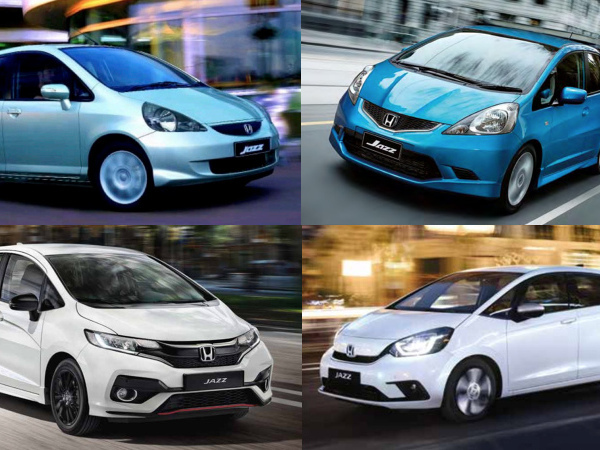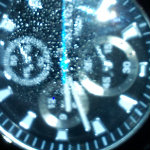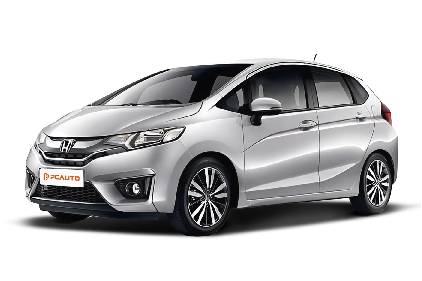Q
What should you never do when replacing your headlight bulbs?
When swapping out your car's headlight bulbs, never touch the glass part with your bare hands. The oils from your skin will stick to the surface, causing uneven heating that can shorten the bulb's life or even make it crack. Always wear clean gloves or wrap the bulb in a clean cloth when handling it. Also, never change a bulb while the power's on or the engine's running—you don't want to risk a short circuit or electric shock. And skip the higher-wattage bulbs than what the manufacturer recommends; they can fry your wiring or melt the housing.
For our Malaysian readers, with the frequent rain and humidity, make sure the headlight housing seals tight after replacing the bulb to keep moisture out and your lights performing at their best. Keep in mind that bulb replacement varies a lot between models—some require removing the entire headlight assembly, while others let you reach in from the engine bay. Check your owner's manual first or ask a pro to avoid breaking clips or damaging parts. If the light still seems dim or flickers after replacement, you might be dealing with a wiring issue or a faulty ballast. Get that checked out ASAP to stay safe on the road.
Special Disclaimer: This content is published by users and does not represent the views or position of PCauto.
Related Q&A
Q
What Segment is Honda Jazz?
The Honda Jazz is classified as a B-Segment small hatchback in the Malaysian market. This segment is typically characterized by flexible handling, economic practicality, and convenience for urban commuting, making it suitable for Malaysia's narrow streets and high fuel costs. The Jazz has become a popular choice in this segment, especially among young families and urban commuters, thanks to its iconic "Magic Seat" flexible seating design, efficient Earth Dreams engine technology, and spacious interior within a compact body.
In the Malaysian market, competing models in the same segment include the Toyota Yaris and Perodua Myvi. However, the Jazz is well - known for the high resale value and reliability of the Honda brand. It's worth noting that B - Segment vehicles in the Southeast Asian market generally prioritize fuel economy and maintenance costs. The combination of the Jazz's 1.5L i - VTEC engine and CVT transmission can achieve an actual fuel consumption of over 15 km/L, meeting the local consumers' demand for practicality.
In addition, this vehicle line was upgraded to a hybrid version in some global markets in 2021. However, the current models in Malaysia still mainly use traditional fuel power. Whether a new energy version will be introduced in the future depends on Honda's regional strategic adjustments.
Q
What is the Reslae Value of Honda Jazz?
The resale value of the Honda Jazz in the Malaysian used - car market is relatively stable. This is due to its reliable quality, low fuel consumption, and the high local recognition of the Honda brand. Depending on the vehicle's age, mileage, and condition, a 3 - to 5 - year - old Jazz can usually retain 50% - 65% of its original price. The Hybrid models may have a 5% - 8% premium because of their energy - saving features.
The key factors affecting its residual value include regular maintenance records (especially the maintenance of the CVT transmission), the body color (white and silver are more popular), and whether it is still within the original factory warranty period. It is recommended that car owners keep complete maintenance receipts and use original factory parts to maximize the vehicle's value retention.
Among its peers, the used - car price performance of the Jazz is better than some of its competitors. This is related to its flexible space design (such as the ULTRA seat system) and low failure rate. However, the specific transaction price still needs to refer to the real - time data on used - car platforms like Carlist or mytukar.
It's worth noting that the tax - exemption policy for domestic cars introduced in some regions after 2020 has slightly affected the price fluctuations of imported used cars. But as a cost - effective urban vehicle, the demand for the Jazz remains strong in urban areas like the Klang Valley.
Q
How Many CC is Honda Jazz?
The Honda Jazz models available in the Malaysian market are mainly equipped with a 1.5 - liter naturally aspirated engine with a displacement of 1497cc (cubic centimeters). This is a common 'golden displacement' for compact hatchbacks, balancing fuel economy and power performance. This engine uses Honda's i - VTEC technology, capable of outputting approximately 120 horsepower and 145 Nm of torque. It is paired with a CVT transmission or a 6 - speed manual transmission (depending on the version), which is suitable for urban commuting and flexible driving.
It's worth noting that while the displacement (CC) affects power output, the actual driving experience also depends on engine tuning, vehicle weight, and the matching of the transmission system. For example, Honda has optimized the combustion efficiency of the Jazz through Earth Dreams technology, making the torque more abundant at low speeds. Malaysian customers can also pay attention to the minor changes in different model years when making a choice. For instance, some versions after 2020 have upgraded the Honda SENSING safety system.
Similar models in the same class, such as the Toyota Yaris or Perodua Myvi, also use a similar displacement, but they have different technological focuses. It is recommended to take test drives for comparison. Additionally, Malaysia's automotive tax structure gives vehicles with a displacement below 1.5 liters a price advantage, which is also one of the reasons why the Jazz has been popular for a long time.
Q
What is the Engine in Honda Jazz?
The Honda Jazz available in the Malaysian market is equipped with a 1.5-liter i-VTEC naturally aspirated gasoline engine. This engine is well - known for its high efficiency and reliability. It has a maximum output power of approximately 120 horsepower and a peak torque of 145 Nm, making it suitable for city driving and daily commuting while also taking fuel economy into account.
This engine adopts Honda's classic i-VTEC technology, which optimizes power output and fuel consumption through an intelligent variable valve timing and lift system. Paired with a CVT continuously variable transmission, it offers a smooth driving experience.
In addition, the Honda Jazz also comes in a hybrid version (such as the e:HEV). It combines a 1.5-liter Atkinson cycle engine with a dual - motor system, further enhancing energy - saving efficiency, which is ideal for consumers with higher environmental protection requirements.
For Malaysian users, the durability and low maintenance cost of this engine are also among the reasons for its popularity. Moreover, Honda's after - sales service network covers the whole country, providing convenience for car owners. When it comes to the used - car market, the engine of the Jazz also has a relatively high resale value, making it an economical and practical choice.
Q
What is the Gearbox Type of Honda Jazz?
The transmission types vary among different versions of the Honda Jazz. Specifically, the 2019 Honda Jazz 1.5 S, 1.5 E, and 1.5 V versions all come with a CVT (Continuously Variable Transmission). This type of transmission offers a smooth shifting experience, making the driving process even more seamless and also helping to improve fuel efficiency.
On the other hand, the 2019 Honda Jazz 1.5 Hybrid version is equipped with a DCT (Dual-Clutch Transmission). A dual-clutch transmission allows for rapid gear changes and highly efficient power transfer, which can enhance the vehicle's dynamic performance and driving pleasure to some extent.
Each type of transmission has its own unique features. Consumers can choose the appropriate model according to their driving habits and needs.
Q
What is the PCD Size of Honda Jazz?
The PCD (Pitch Circle Diameter) size of the Honda Jazz is 4x100, which means its wheels have 4 bolt holes, and the centers of these holes are distributed on a circle with a diameter of 100 millimeters. This specification is very common in the Malaysian market and is suitable for many economy and compact cars. Understanding the PCD size is crucial when replacing wheels or upgrading tires because if the PCD doesn't match, the wheels won't be installed correctly, which may affect driving safety.
Apart from the PCD, when choosing wheels, you also need to pay attention to the center bore diameter (CB) and the offset value (ET) to ensure full compatibility. Owners of the Honda Jazz can choose factory - spec wheels or wheels from other brands that meet the 4x100 PCD when modifying their wheels. However, it is recommended to choose certified products to ensure quality and safety.
In addition, when modifying wheels, you need to pay attention to the traffic regulations in Malaysia to ensure that the modified vehicle meets local standards and avoid penalties for violations.
Q
Does Honda Jazz Support Apple Carplay?
Yes, some models of the Honda Jazz in Malaysia are indeed equipped with Apple CarPlay, especially the higher - spec versions like the Honda Jazz RS or Honda Jazz Hybrid. These models usually come with a touch - screen infotainment system that's compatible with Apple CarPlay. This allows users to connect their iPhones via a data cable and use functions such as navigation, music, and making calls. It's important to note that there might be differences in Jazz models of different years and configurations. It's recommended to confirm the specific features with the dealer before purchasing. The addition of Apple CarPlay significantly enhances driving convenience, enabling users to use common phone functions more safely without having to take their eyes off the road to operate their phones.
Moreover, the Honda Jazz is well - loved by Malaysian users for its flexible interior space design and fuel efficiency. It's ideal for city commuting and small families. If you have high requirements for in - car connectivity features, you can also look into similar configurations of other models in the same class, such as the Toyota Yaris or Mazda 2, to make a more suitable choice.
Q
What is the Tyre Brand of Honda Jazz?
The original-equipment tire brands for the Honda Jazz in the Malaysian market may vary depending on the model year and configuration. Common tire - supplying brands include mainstream manufacturers such as Dunlop, Yokohama, or Bridgestone. These brands are well-known for their wear resistance and wet - surface performance, which meet the requirements of the rainy climate in Southeast Asia. Car owners can confirm the specific tire model through the sidewall markings or the user manual. For example, the Dunlop ENASAVE EC300+ is a common choice for high-efficiency and energy-saving tires in recent years.
It's worth noting that since tires are consumable items, when replacing them, in addition to the original-factory specifications, you can also consider silent and comfortable products like the Michelin Primacy 4 or the Continental UC6. However, you must ensure that the size (such as 185/55 R16), load index, and speed rating meet the matching requirements of the Jazz's suspension setup and ABS system.
Regularly checking the tire pressure (it is recommended to do it once a month) and wheel alignment can extend the tire life. Especially on the high-temperature roads in Malaysia, the rubber ages more quickly. If the tread depth is found to be less than 1.6 millimeters, you should replace the tires immediately to comply with JPJ regulations.
Q
Is Honda Jazz a Good Car? Learn the Pros and Cons Here!
The Honda Jazz is a highly favored small hatchback in Malaysia. Its advantages include a flexible body size that is suitable for city driving, and it offers economical fuel consumption. The 1.5-liter i-VTEC engine it is equipped with provides smooth and reliable power. The interior space is cleverly designed. In particular, the "Magic Seats" allow for flexible adjustment of the storage space, making it suitable for families or young consumers. Moreover, the Honda brand has an extensive after-sales service network in Malaysia, making maintenance relatively convenient.
However, it does have some drawbacks. Its sound insulation is average, and wind noise is quite obvious when driving at high speeds. The rear suspension is tuned to be on the stiffer side, which affects comfort to some extent. Also, its configuration may not be as rich as that of its competitors in the same class.
For buyers with a limited budget who value practicality and brand reliability, the Jazz is a worthy option to consider. But if you're looking for higher comfort or more advanced technological features, you may need to compare other models.
In Malaysia's hot and rainy climate, it is recommended to regularly check the air-conditioning system and the anti-rust condition of the chassis to extend the vehicle's lifespan.
Q
What is the Width of Honda Jazz?
The body width of the Honda Jazz is 1,694 millimeters. This dimension is considered moderate among the common city compact cars in Malaysia. It can ensure that the interior lateral space is sufficient for three adults to sit comfortably, and at the same time, it can also flexibly maneuver through the narrow streets of Kuala Lumpur or the old shopping mall parking lots. As a global strategic model of Honda, the compact body design of the Jazz is particularly suitable for the winding mountain roads and congested urban roads in Malaysia. The MM concept (minimizing the mechanical space and maximizing the interior space) it adopts enables the 1,694-millimeter body width to achieve a class - leading interior space utilization rate. The magic seats in the rear can be folded in multiple combinations, which is very practical when carrying large items such as potted plants or durians.
It's worth noting that when purchasing a compact car in Malaysia, besides paying attention to the body width, you should also take note of the overall width data when the rear - view mirrors are unfolded. This is especially important for the local road conditions where motorcycles often shuttle through. The electric folding rear - view mirror function of the Jazz can handle this situation very well.
Latest Q&A
Q
What's the price of the hybrid battery of Toyota Prius?
In Malaysia, the cost to replace a Toyota Prius hybrid battery typically ranges from RM8,000 to RM15,000. The exact price depends on the battery model, the car's year, and whether you go with an original equipment manufacturer (OEM) or third-party supplier. OEM batteries come with a higher price tag but include warranty coverage, while third-party options might save you money—just make sure to thoroughly check their quality and after-sales support before deciding.
A Prius hybrid battery usually lasts around 8 to 10 years or roughly 200,000 kilometers, but real-world longevity can vary based on driving habits, climate conditions, and maintenance. Simple steps like avoiding extreme charging/discharging cycles during regular upkeep can help keep the battery performing better for longer.
On a side note, the Malaysian government actively promotes eco-friendly vehicles, so some states may offer tax incentives for hybrid cars. If you're looking to cut long-term ownership costs, it's also worth asking authorized service centers about battery recycling or refurbishment programs—they might have viable solutions to extend your battery's life without breaking the bank.
Q
How to check the health of Toyota Prius hybrid battery?
Want to check the health of your Toyota Prius hybrid battery? Here are a few ways to run a basic inspection. First off, hook up an OBD-II scanner to read the battery module voltage data. You'll want to make sure all modules are balanced, usually sitting around 7.2V. If you spot any module with a voltage difference over 0.5V, that could be a sign it's starting to age. Next, keep an eye on the hybrid system warning light on your dashboard or check the battery charge/discharge efficiency on the in-car energy monitor screen. Any wild fluctuations there might mean the battery's performance is on the decline.
Another quick test: with the car running, turn on the AC and switch to EV mode. See if the battery can power the vehicle steadily for 5-10 minutes—depending on its capacity, of course. If the engine kicks in constantly, you'll need a deeper dive. For folks in Malaysia, that hot and humid climate can speed up battery electrolyte evaporation or terminal corrosion. So, it's a good idea to regularly check if the battery cooling fan is clogged and avoid leaving the car parked for ages, which can drain the battery deeply.
For a more accurate assessment, swing by a Toyota authorized service center—they can do a proper battery capacity test or internal resistance analysis. Hybrid batteries typically last 8-10 years or 150,000-200,000 km, but real-world lifespan depends a lot on driving habits and maintenance. Treat it right, and it'll keep chugging along efficiently.
Q
What's the price of the Toyota Prius Hybrid?
In Malaysia right now, the price of a Toyota Prius Hybrid can vary quite a bit depending on the model year, trim level, and overall condition. If you're looking at a brand-new one, you're probably looking at a range of around RM 139,000 to RM 155,000, but that can shift a bit based on the options you pick and any ongoing promotions. For used models, prices typically start from around RM 70,000, with the exact figure depending on how old the car is and how many kilometers it's clocked.
The Prius Hybrid, being Toyota's classic hybrid offering, has always been a hit with Malaysian buyers thanks to its impressive fuel efficiency and eco-friendly credentials. It's a fantastic choice for city driving especially – that hybrid tech really helps keep fuel costs down while also cutting down on carbon emissions.
Another sweet spot is the tax incentives the Malaysian government offers for hybrid vehicles, which makes owning a Prius Hybrid even more appealing from a cost perspective. On top of that, Toyota has a widespread after-sales service network across Malaysia, so getting repairs and regular maintenance done is pretty convenient. That definitely adds to the car's practicality.
If you're in the market for a hybrid, the Prius Hybrid is definitely worth checking out. I'd recommend heading to your nearest Toyota dealership for a test drive and to get the lowdown on the latest promotions they might have.
Q
What is the towing capacity of the Toyota Prius?
The Toyota Prius, known for its fuel efficiency and eco-friendly credentials as a hybrid, isn't exactly built with towing as a top priority. From what the specs say, it can handle around 454kg, which is okay for small trailers or light loads. But hey, if you're in Malaysia, you gotta keep an eye on the local traffic laws regarding towing. Stuff like making sure the trailer is registered, has a proper braking system, and that the total weight doesn't exceed what the manufacturer recommends – that's all crucial.
If you're planning to tow with a Prius in Malaysia, do yourself a favor and check the owner's manual first to get the exact deets. And make sure the weight in the trailer is evenly distributed, otherwise, it could mess with how the car handles. Also, while the Prius's battery and electric motor setup is great for city driving, hauling heavy stuff for long stretches might take a toll on fuel efficiency. So, if you're regularly needing to tow something substantial, maybe the Prius isn't your best bet.
Toyota's got other models that are way more up to the task, like the Hilux or Fortuner. Those bad boys have more power under the hood and can tow a lot more weight. No matter which vehicle you end up using, keeping it well-maintained and sticking to the local rules are the keys to staying safe out there.
Q
How to reset the hybrid system of Toyota Prius?
To reset the Toyota Prius hybrid system, start by disconnecting the negative cable of the 12V battery for about 5 minutes. This allows the system to fully discharge before reconnecting, which should clear temporary fault codes and reset the hybrid control unit. Just keep in mind this will wipe the memory of electronic devices like the radio, so it’s a good idea to jot down any important settings before disconnecting the power. For Malaysian owners, the hot and humid climate can cause the battery to age faster, so regularly checking its condition is key. If the problem persists, it’s best to head to an authorized service center with professional diagnostic tools—some deeper issues require specialized equipment to fully resolve. Maintaining a hybrid system differs from a conventional car, so stick to the manufacturer’s recommended service intervals, especially for the cooling system and high-voltage battery pack. These components are crucial for keeping the system running efficiently. While driving, keep an eye on the hybrid system indicator lights on the dashboard; any unusual behavior should be checked promptly to ensure your Prius stays in top shape.
View MoreRelated News

Auto Arena: Which generation of Honda Jazz (Fit) is your favorite?
LienMay 21, 2024

Honda N-ONE e: Officially launched in the Japanese market, with a range of 295 kilometers
AshleySep 12, 2025

Honda Prelude returns after 24 years, the sixth-generation Prelude will be released in Japan
Kevin WongSep 4, 2025

Honda S7 and P7 sales in China fall short of expectations, significantly lagging behind Toyota and Nissan.
RobertSep 4, 2025

The 2025 Honda Prelude Is Back: Hybrid-Powered Coupe with Type R Chassis Tech
JohnAug 4, 2025
View More










 Cars
Cars




Pros
Cons